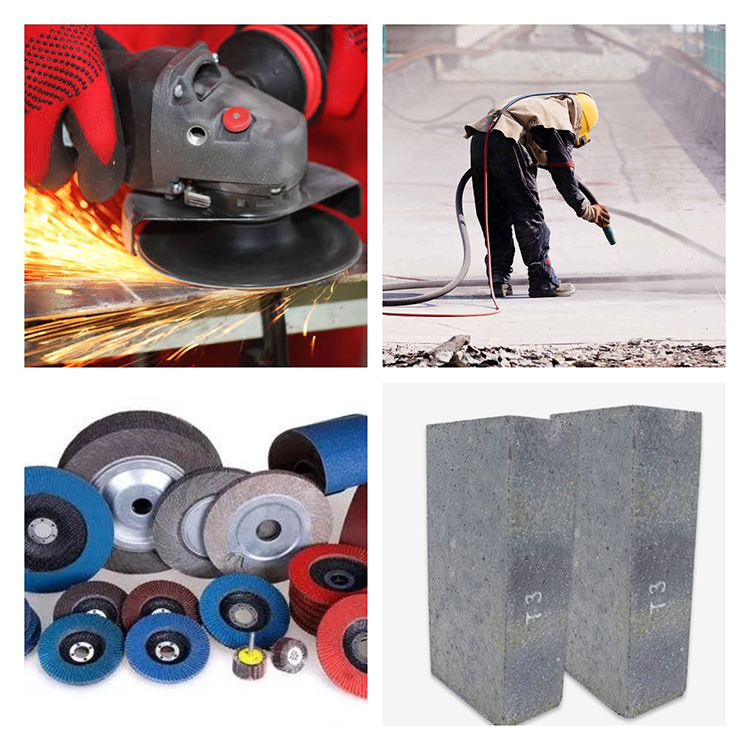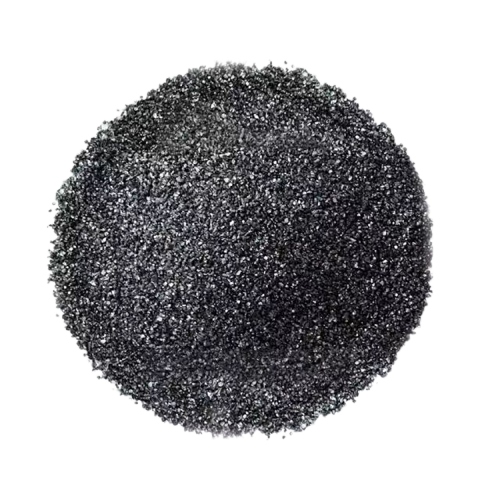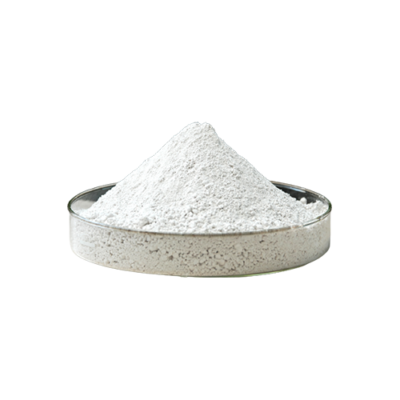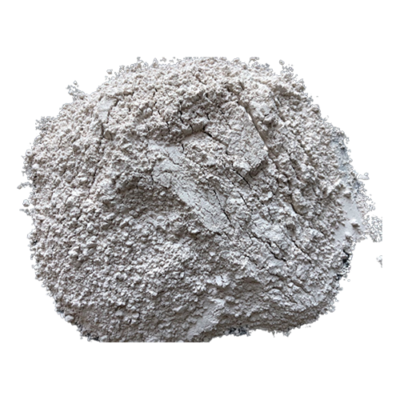Description
Silicon Carbide exists in a hexagonal crystal structure, characterized by its steadfast chemical properties, elevated thermal conductivity, minimal thermal expansion coefficient, remarkable wear resistance, and a Mohs hardness rating of 9.5. It appears in two primary variants: black and green. Black silicon carbide boasts admirable toughness, rendering it extensively employed across industries such as glass, ceramics, stone, refractories, iron, non-ferrous materials, and more. Meanwhile, green silicon carbide showcases a strong self-sharpening ability, predominantly utilized in the processing of hard alloys, titanium alloys, and optical glass. Additionally, it finds application in honing cylinder liners and precision grinding of High-Speed Steel (HSS) tools.

Characteristics of Silicon Carbide Raw Material:
- Exhibits minimal thermal expansion
- Demonstrates high thermal conductivity
- Resists development of thermal stress
- Displays excellent thermal shock resistance
- Offers corrosion resistance
- Withstands extreme cold and heat
- Possesses high-temperature creep resistance
Applications of Black Silicon Carbide:
- Serves as an abrasive, finding utility as a grinding tool in applications like grinding wheels, oilstones, grinding heads, sand tiles, and more.
- Functions as a metallurgical deoxidizer and specialty material.
- High-purity single crystal variety is suitable for semiconductor manufacturing and silicon carbide fiber production.
- Used as a deoxidizer in steelmaking, a modifier in cast iron structures, and a raw material for silicon tetrachloride manufacturing.
- Enables high-temperature indirect heating.
- Finds extensive use as a metallurgical additive and refractory material.

Advantages of Silicon Carbide:
Silicon Carbide, specifically the black variant comprising around 95% SiC content, exhibits higher toughness compared to green silicon carbide. It is primarily applied in the processing of materials with low tensile strength. This includes industries such as glass, ceramics, stone, refractory materials, cast iron, and non-ferrous metals.
On the other hand, green silicon carbide, with a SiC content of approximately 97% or higher, showcases excellent self-sharpening properties. It is predominantly utilized in the processing of hard alloys, titanium alloys, and optical glass. Moreover, it finds application in honing cylinder liners and grinding high-speed steel cutting tools.
| Color | Granularity range | Chemical Component % | Density g/cm3 | ||
| SiC | F.C | Fe2O3 | |||
| Black | F4~F90/P12~P100 | ≥98.6 | ≤0.2 | ≤0.4 | ≥3.12 |
| F100~F150/P120~P150 | ≥98.1 | ≤0.25 | ≤0.5 | ||
| F180~F220/P180~P220 | ≥97.2 | ≤0.3 | ≤0.55 | ||
| F230~F280/P240~P360 | ≥97.2 | ≤0.3 | ≤0.55 | ≥3.10 | |
| F320~F500/P400~P1000 | ≥97.0 | ≤0.35 | ≤0.6 | ||
| F600~F800/P1200~P1500 | ≥96.5 | ≤0.4 | ≤0.6 | ||
| F1000~F1200/P2000~2500 | ≥95.5 | ≤0.5 | ≤0.7 | ||
| Green | F4~F90/P12~P100 | ≥99.1 | ≤0.2 | ≤0.2 | ≥3.18 |
| F100~F150/P120~P150 | ≥98.6 | ≤0.25 | ≤0.45 | ||
| F180~F220/P180~P220 | ≥98.0 | ≤0.25 | ≤0.5 | ||
| F230~F280/P240~P360 | ≥98.0 | ≤0.3 | ≤0.5 | ≥3.15 | |
| F320~F500/P400~P1000 | ≥97.5 | ≤0.3 | ≤0.5 | ||
| F600~F800/P1200~P1500 | ≥97.0 | ≤0.35 | ≤0.5 | ||
| F1000~F1200/P2000~P2500 | ≥96.5 | ≤0.4 | ≤0.5 | ||



